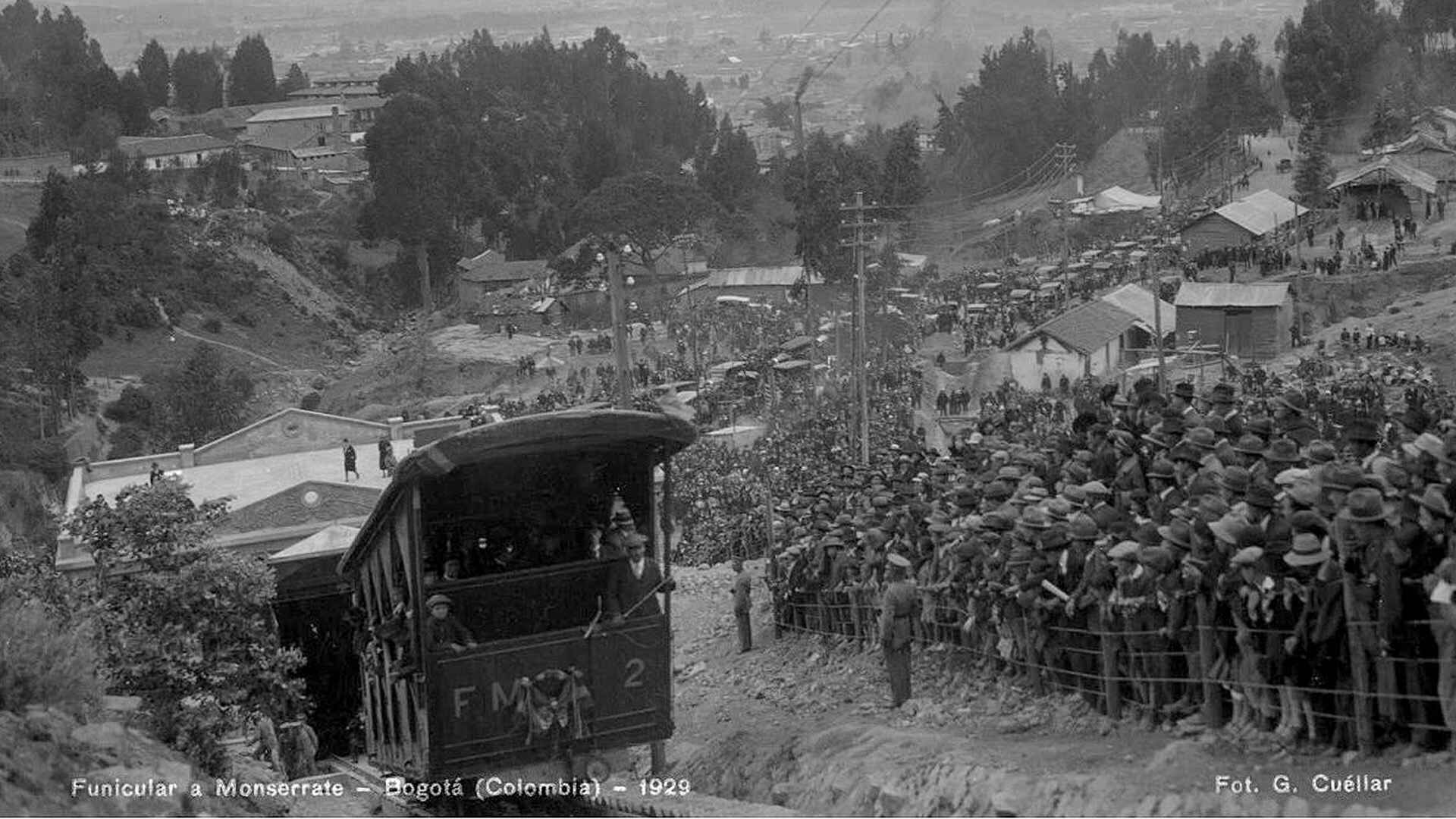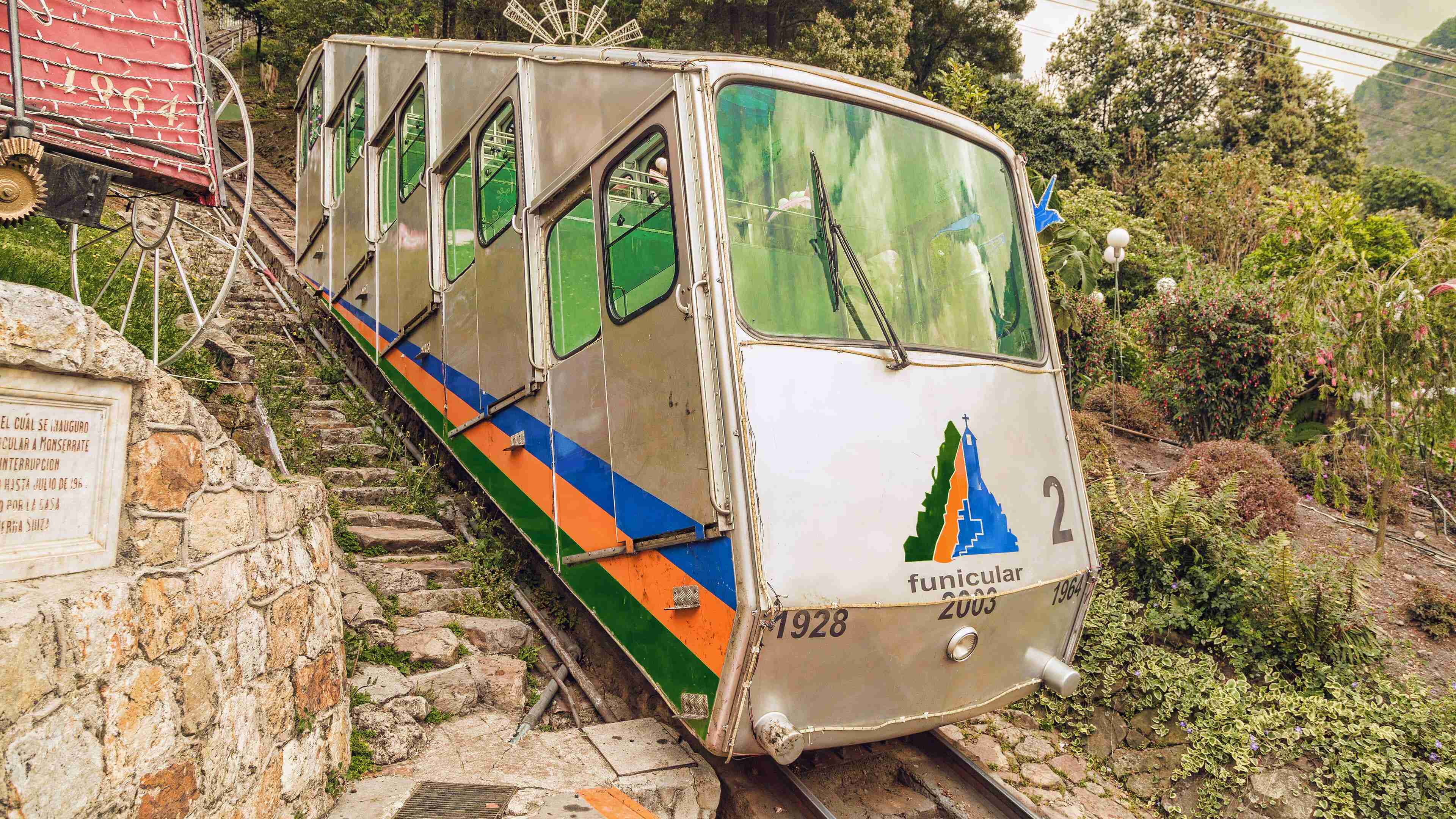
1538 Founding of Bogotá
The Cerro de Monserrate, along with Guadalupe, is recognized as one of the mountain formations that would safeguard the emerging city of Santa Fe de Bogotá, founded by Gonzalo Jiménez de Quesada in 1538.
Get to know our history
The Cerro de Monserrate, along with Guadalupe, is recognized as one of the mountain formations that would safeguard the emerging city of Santa Fe de Bogotá, founded by Gonzalo Jiménez de Quesada in 1538.
Pedro Solís de Valenzuela and other devotees construct a chapel dedicated to the Virgin of Montserrat at the top of the hill. This first chapel marks the beginning of Monserrate as a site of pilgrimage.
Priest Bernardino de Rojas commissioned Pedro Lugo de Albarracín to carve a fallen Christ. This image became the focal point of devotion at Monserrate, particularly after the miracles attributed to it.
Monserrate withstood two earthquakes that devastated much of Bogotá, which heightened the veneration of the Fallen Lord, believed to be miraculous for protecting the chapel during these events.
The construction of a new Sanctuary was completed to replace the old shrine, which could no longer accommodate the increasing number of pilgrims. This new neo-Gothic sanctuary is one of the most significant religious buildings in Bogotá.
Since October 1926, the construction of the funicular has drawn the attention of Bogotá's residents. Inaugurated in 1929, it was the first funicular in South America, marking a significant milestone in the city’s history. Its installation required a tunnel at the top of the hill. The original funicular had a capacity of 60 people, with seats reserved for first-class passengers who had purchased shares in the Empresa Funicular de Bogotá.
The church is renovated and adopts a neocolonial style that remains today. It was consecrated as a minor basilica by Pope Pius XII, acknowledging its significance as a center of devotion.
On September 27, the cable car, the first in South America, was inaugurated to enhance and diversify access to Cerro de Monserrate for pilgrims. This innovative mode of transportation not only improved access to the sanctuary but also became a major tourist attraction and a source of pride for the people of Bogotá.
In 1970, Monserrate began to transform into a tourist center with the inauguration of a tourist train under the administration of Carlos Albán Holguín. During that time, chairlifts were also put into operation, providing families with a variety of activities. However, in the late 1980s, these attractions were discontinued.
The San Isidro restaurant, renowned for its seasonal cuisine throughout the year, began operations on September 7 in the charming colonial mansion. Before this, it was the Panorama restaurant, known for its stunning views of Bogotá, and prior to that, it served as accommodations for employees of the funicular construction site.
The cobblestone road was installed through the efforts of the District Institute of Culture and Tourism, transforming what was once a treacherous walk into a more accessible and safe experience for pilgrims. The thoughtfully designed cobblestone-paving not only improved access to the sanctuary but also helped preserve the natural environment by reducing soil erosion.
Throughout the 20th century, the image was brought down three times. The first occurred in 1916 to pray for an end to a severe drought that was devastating Bogotá. The second occasion was in 1952, aimed at requesting peace. The third time was on November 21, 1998, when the image was brought down to Bogotá once more to pray for peace in the country.
In December 2003, the funicular entered a new phase with a more modern design in its cars, featuring glass roofs that allowed passengers to take in every detail of the spectacular views without missing a moment of the scenery.
In 2018, the cable car underwent a renovation, incorporating floor-to-ceiling windows to maximize the panoramic views of the city. In 2019, the transportation system also underwent a transformation, showcasing textures and shapes inspired by pre-Columbian art. This upgrade not only improved the aesthetics but also provided tourists with a connection to Colombia's ancestral culture.
The history of Cerro de Monserrate continues to unfold each day. With every visitor, pilgrim, and new conservation and development project, Monserrate continues to evolve, adapting to the needs of its guests while remaining a steadfast symbol of faith, culture, and nature in Bogotá.
Thus, Monserrate will remain a spiritual and cultural beacon for Bogotá, Colombia, and the entire world, continuing to leave its mark on the history of humanity.
Secure your place at the top. Get your tickets here!
Get your ticket










